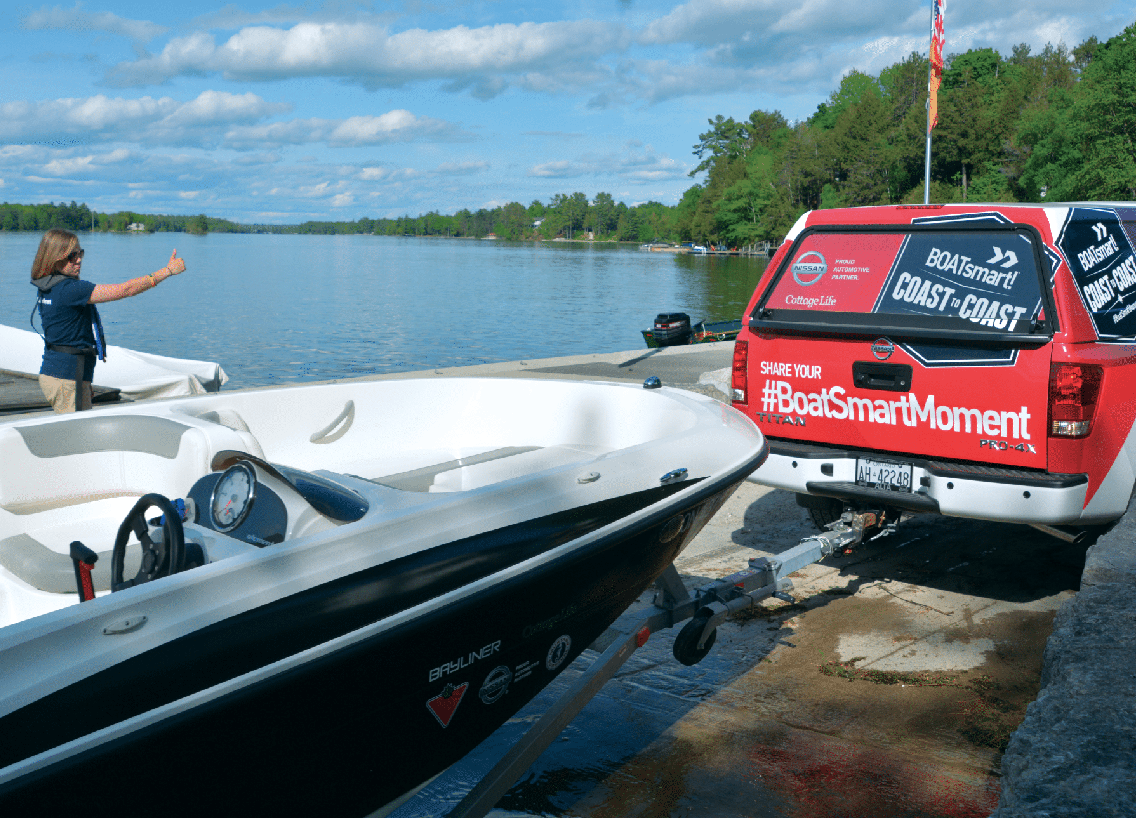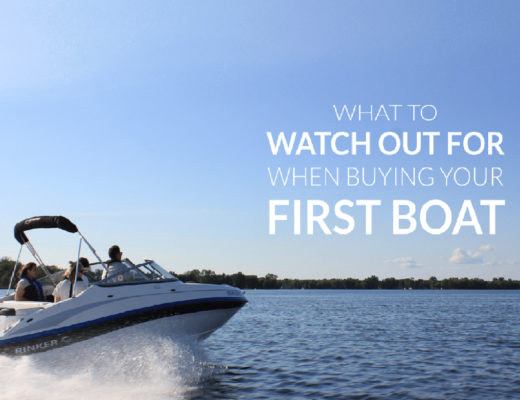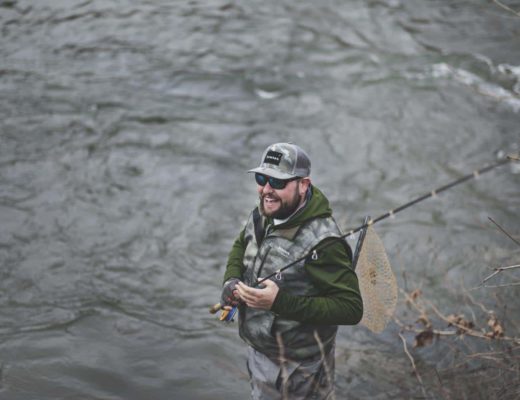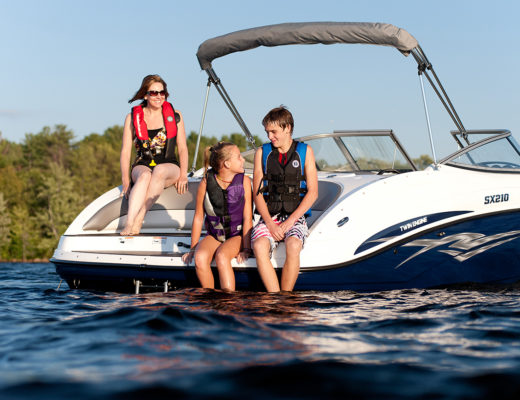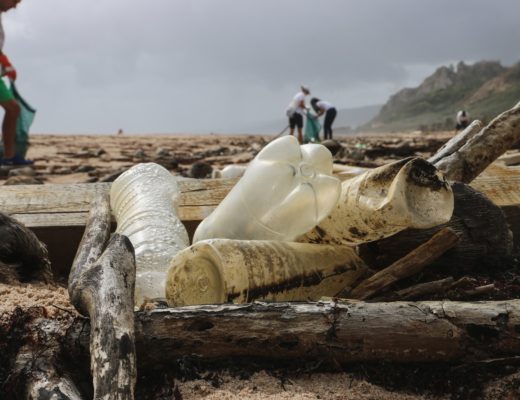In order to legally drive a car in Canada, you must fully understand and respond to a variety of road signage; the same applies to driving a boat in Canadian waters. There are many boating restrictions and advisory indicators that will inform boat operators about the speed they are allowed go, the hazards in the area as well as other activities taking place in the water that require the operator to avoid or take extra caution. Restriction signs are framed in orange, with the symbol on the sign indicating the type of restriction that applies. Some details to note include:
- Arrow Shaped: the restriction applies in the direction pointed by the arrow
- Green Border: a special condition applies to this restriction.
Boat operators must also be able to clearly identify and understand the variety of special buoys and flags in the water, as they provide essential information about boating hazards. These markers may be equipped with lights for night visibility, have flashing yellow lights, or have letters/numbers on them for marine chart identification.
Below is a list of signage and buoys to familiarize yourself with before you start your engines….
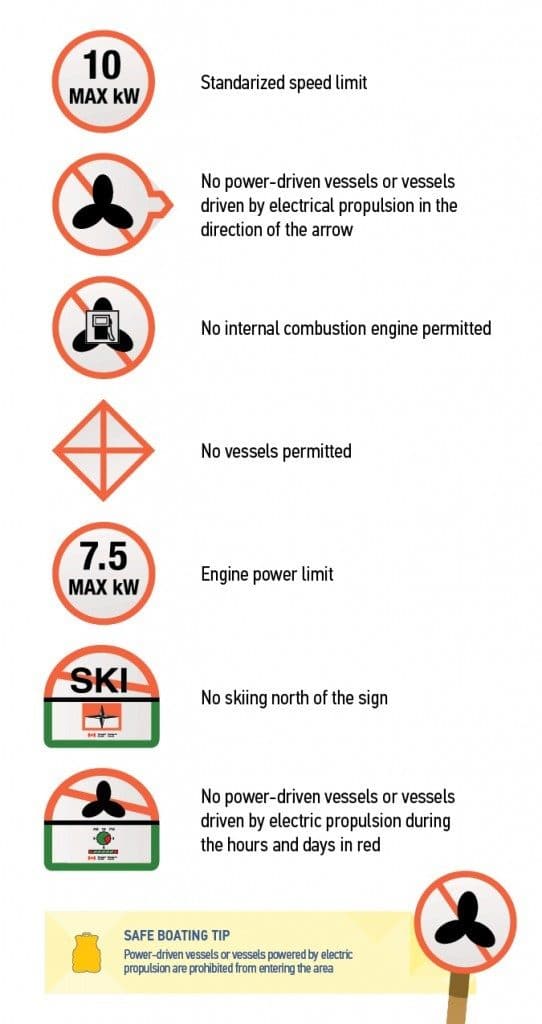
- Diving buoy: this buoy is white in colour, with a red flag and diagonal white stripe. This marks an area where scuba and related diving activities are taking place.
- Swimming buoy: this white buoy marks the area where swimming is taking place.
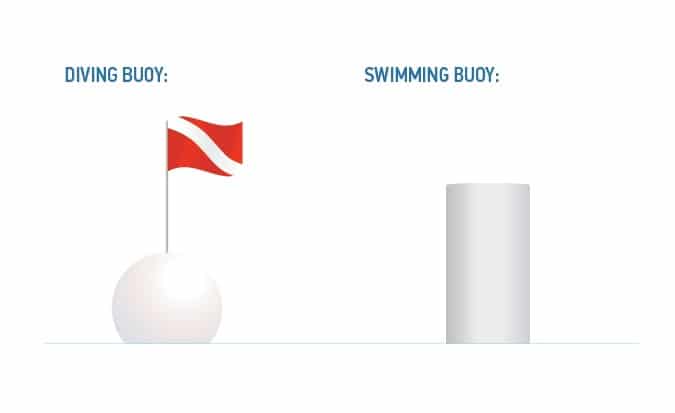
- Keep out buoy: this white buoy with an orange diamond icon with lines through it marks waters in which boating is not permitted.
- Control buoy: this white buoy with an orange circular icon marks an area where boating is restricted. The type of restriction in place will be clearly labelled in black text.
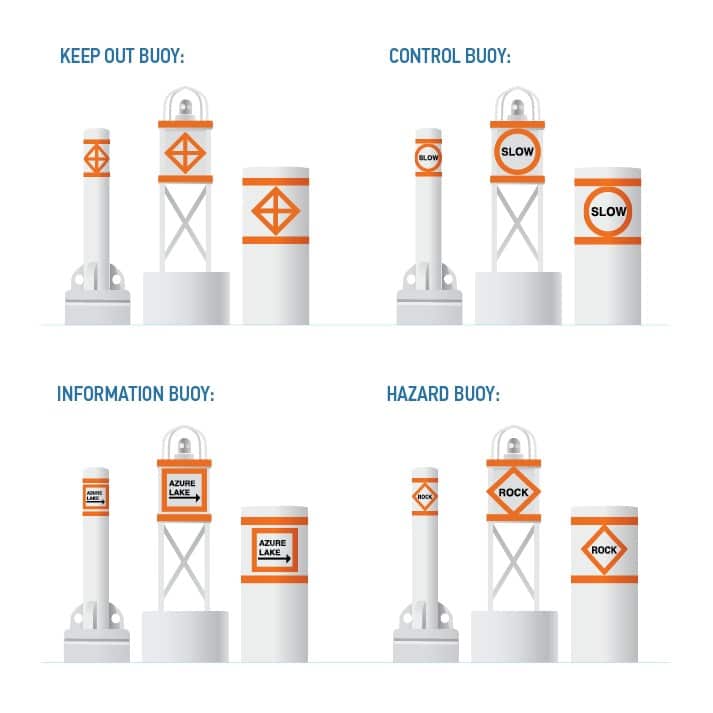
- Information buoy: this white buoy with an orange square icon provides information of interest to boaters using clearly marked words or symbols.
- Hazard buoy: this white buoy with an orange icon and two horizontal bands marks hazards such as rocks or shoals, which will be labelled on the buoy.
- Cautionary buoy: this yellow buoy marked dangers such as underwater structures, areas where a safe channel may not exist or may mark traffic separations. Cautionary buoys will display ID letters, and may carry a top mark in a single yellow
- Anchorage buoy: this yellow buoy marked with an anchor symbol indicates where it is safe to anchor your boat.
- Mooring buoy: this white and orange circular buoy is the only Aid to Navigation that you can legally secure your boat to.
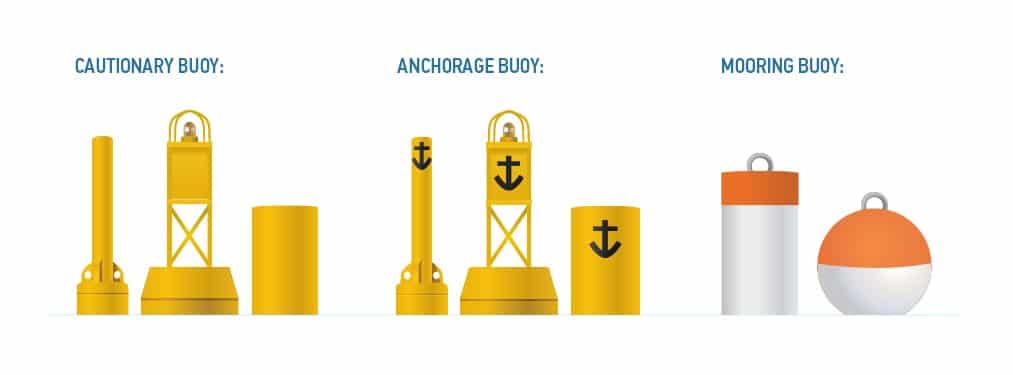
Boating signage and buoys are labelled clearly and typically easy to understand, but you should fully familiarize yourself with these signs before you hit the water.
Test yourself with the BOATsmart practice quiz!
